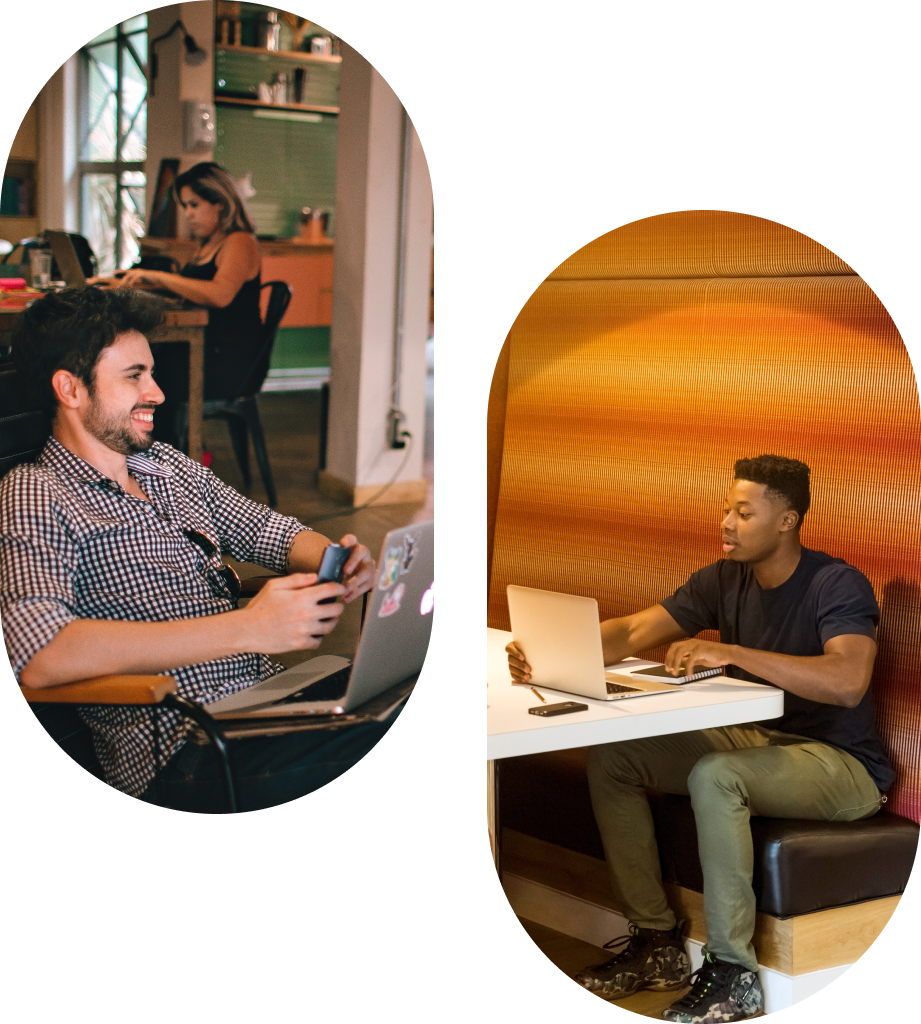You know you’ve been working at the same company for quite some time when you already catch yourself saying, “Back in the day...” Over the years, workplace dynamics have evolved significantly, especially since the pandemic.
What used to be a shared physical office space has shifted to virtual environments. Thanks to AI, cloud technology, and secure remote access, teams can now easily share ideas and coordinate tasks without being in the same room—or even the same time zone! This shift has definitely revolutionized how we collaborate, breaking down geographical and social barriers, improving productivity, enhancing communication, and even fostering a more inclusive, flexible work culture.
And while there were initial concerns about fully remote and hybrid setups, these new ways of working have actually boosted company productivity and employee satisfaction. And let’s face it—many companies have fully adapted to this work model, with no plans of returning to traditional, fully onsite work anytime soon. So, what’s next? With emerging technologies, how will collaboration continue to evolve?
How Technology is Redefining Team Collaboration
Collaboration is the heart of every endeavor among teams. It has encouraged open communication, idea sharing, and openly accepting proactive feedback for improvement. Though technology has changed the way we work, the goal of the team remains the same: collective success.
And so as technology continues to progress, let’s take a closer look at the trends that have been—and will be—shaping the future of collaboration:
- Embracing Flexible Work Models
Work flexibility has obviously transformed how teams operate. From fully remote work to hybrid setups—and now some returning to the office—companies have ultimately learned to adapt. The key takeaway? Flexibility doesn’t just boost productivity; it creates happier employees.
Let’s admit it: just because someone is in the office for eight hours doesn’t mean they’re productive. And working remotely doesn’t automatically mean slacking off. In fact, new studies show that flexibility helps employees thrive.
Yes, for Gen Z workers, flexibility is a dealbreaker. This generation values the freedom to choose where, when, and how they work. And when given this freedom, they tend to be more engaged, productive, and loyal to their companies.
What seemed like a distant future of people from different parts of the world working together on a project that could augment the lives of people has now materialized with tools like video conferencing platforms, virtual whiteboards, and project management software that has broken down geographical barriers. The future of this work model even looks interesting as experts continue to explore other tools that can create inclusive environments where diverse perspectives can thrive, fueling innovation and efficiency.
- AI in Collaboration Tools.
This year alone, we’ve seen AI evolve at lightning speed. From generating art and writing code to composing music and even holding conversations, AI is pushing the boundaries of what’s possible.
In team collaboration, AI tools are helping streamline communication and decision-making. Now, you can automate tedious tasks like transcribing meetings, summarizing discussions, or handling repetitive questions. By taking care of these tasks, AI allows team members to focus on meaningful work.
Also, AI has shown the potential to revolutionize training. By analyzing skill gaps, AI can recommend personalized resources to help employees grow. This ensures that teams stay adaptable and ready to tackle changing demands. Because AI heavily relies on data rather than personal opinions, it can reduce bias and support better, more objective decisions. In short, AI is becoming a team player—enhancing workflows, improving efficiency, and helping teams work smarter, not harder.
- Immersive Collaboration with AR and VR
One common concern about remote work is the fear of losing connection with colleagues. But tools like augmented reality (AR) and virtual reality (VR) are bridging that gap, taking collaboration to the next level.
These technologies go beyond traditional video calls and shared documents. With AR and VR, teams can work together in 3D environments, making remote collaboration feel just as real as being in the same room.
For example, AR and VR can:
-
Simulate real-world scenarios for better decision-making.
-
Allow teams to visualize complex data in an interactive way.
-
Enable virtual walkthroughs before launching a project or product.
-
Create immersive training programs for new hires.
As a matter of fact, companies like Spatial have been exploring unique ways to utilize these immersive technologies to further enhance teamwork. And when these technologies are made accessible to teams around the world, imagine the wonderful opportunities it could do to make discussions engaging and effective for remote and hybrid work! (Totally interesting to find out.)
- Real-Time Collaboration with Cloud Technology
Gone are the days of emailing files back and forth or carrying USB drives around. Cloud technology has revolutionized how teams share and work on projects. With cloud-based platforms, team members can access the same documents, programs, and resources in real-time—no matter where they are. This eliminates delays and fosters a more collaborative environment.
Now, cloud tools allow team members to:
-
Edit and comment on shared files simultaneously.
-
Track project updates in real-time.
-
Access resources securely from anywhere in the world.
Not only that, but cloud technology also supports managers by providing a clear view of what’s happening across teams and even utilizing integrated apps to make tasks engaging and interactive for team members. In fact, according to a NordVPN review by Cybernews, privacy-conscious users and those with diverse online needs have been using VPNs to mask IP addresses, block malware, and safeguard connections, companies can also ensure safe access while fostering seamless collaboration. This shift to cloud-based tools not only boosts productivity but also makes teamwork more flexible and efficient.
Is Your Company Ready for the Future?
Maybe it’s about time that we eliminate that nagging thought that technology will replace us. Instead, we focus on collaborating on how we can better utilize these technologies to further develop the team—making work a more immersive, open, and dynamic place where you look forward to sharing your creative ideas and thoughts to address real-world issues. By embracing technology as an ally, we can foster an environment where innovation thrives and everyone feels empowered to contribute to meaningful solutions.
So, as we navigate this digital landscape, the better question to ask is: how ready are you to embrace these changes? After all, the future isn’t something to fear about—it has always been a place to grow. But how ready are you?



